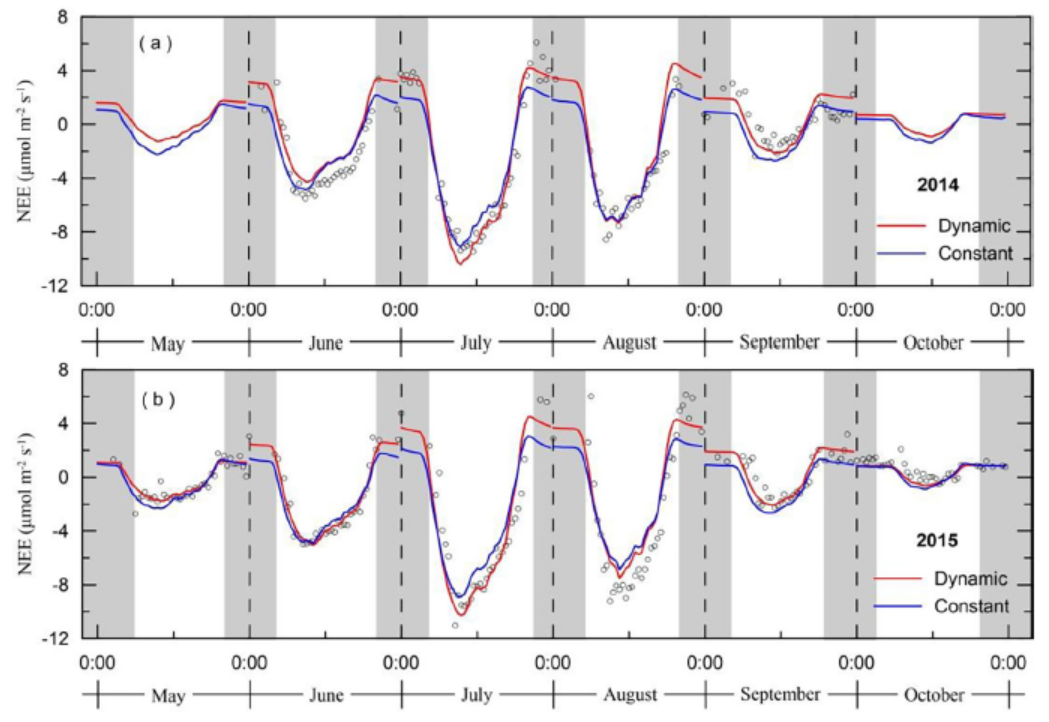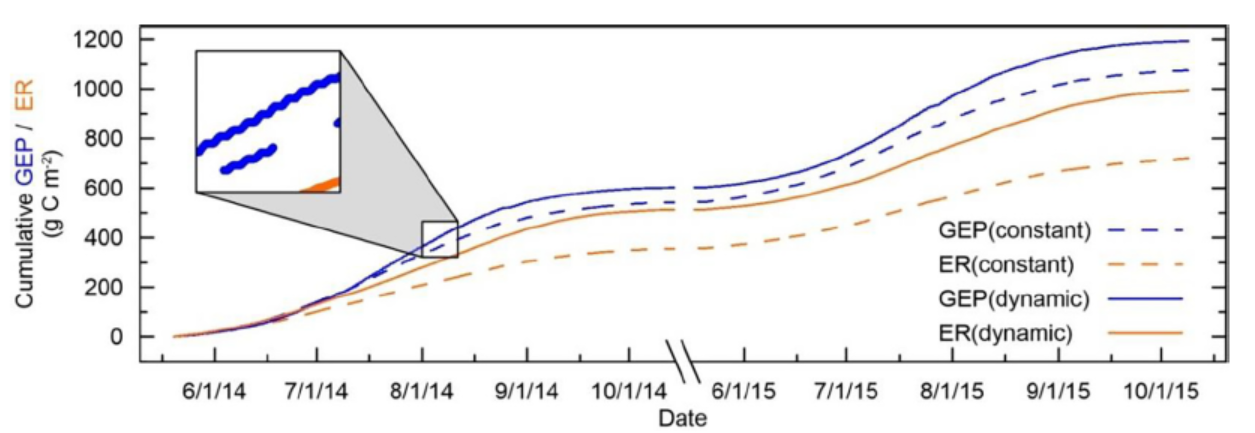Northern peatlands are hotspots for studying carbon dynamics, including release and sequestration. Nowadays the eddy covariance (EC) observations are mainly used to reveal patterns, evaluate budgets and interpret influencing mechanisms of greenhouse gas exchange between the atmosphere and ecosystem.
However, existing EC studies seldom analyzed short-term flux fluctuations. Furthermore, less attention is focused on the variations of photosynthesis (respiration) parameters and how these parameters correlate to environmental factors.
Recently, a research group from Northeast Institute of Geography and Agroecology, CAS, conducted continuous field observations on ecosystem CO2 exchange between a typical permafrost peatland of the Great Hing’an Mountains and the atmosphere during the growing season of 2014 and 2015 using the open-path eddy covariance technique. Footprint analysis and turbulence stationary test were applied to the calculated fluxes to improve the data accuracy. High quality data were then screened to study emission patterns. Combining widely used models with the observed data, an empirical model derived by photosynthetically active radiation was developed to fit daily photosynthesis reduction.
Researchers found the seasonal variation of apparent quantum yield (α, mol CO2 mol-1 photon), maximum photosynthesis rate (pmax, μmol CO2 m-2 s-1) and temperature sensitivity for respiration (E0, K) could be simulated by a Gaussian based equation. The NEE during the growing season of 2014 and 2015 was estimated to be -70.6 g C m-2 and -94.9 g C m-2, respectively. The CO2 exchange between ecosystems and the atmosphere is a dynamic process that varies on scales from minutes to years. Combining the Lloyd-Taylor equation and the Michaelis-Menten equation, the conceptual model we modified is capable of simulating daily photosynthesis depression and is helpful in interpreting the diurnal variation of CO2 fluxes.
This study presents the first improved utilization of eddy covariance data from typical peatlands in northeast China. We propose that plant respiration should be quantified independently, and existing models should be modified to approximate actual conditions. The detailed utilization and analyses of the eddy covariance data can better reveal patterns of CO2 exchange between the peatlands and the atmosphere.

The monthly average of the diurnal variations of Net Ecosystem CO2 Exchange (NEE) from May to October.

Cumulative gross ecosystem production (GEP) and ecosystem respiration (ER) for the period mid- May to early October in 2014 and 2015.
The research paper by Xueyang Yu, Changchun Song and Li Sun et al. was published in the Journal of Ecological Indicators.
https://doi.org/10.1016/j.ecolind.2020.106427
Xueyang Yu, Changchun Song, Li Sun*, Xianwei Wang, Wenwen Tan,. Towards an improved utilization of eddy covariance data: Growing season CO2 exchange from a permafrost peatland in the Great Hing'an Mountains, Northeast China. Ecological Indicators, 2020, 115, 106427.